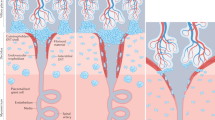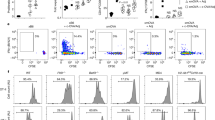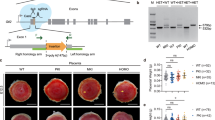Abstract
THERE has been increasing interest during the past decade in the immunological aspects of pregnancy. Since the placenta is of fœtal origin, it has been postulated that the former is antigenically different from the mother and thus represents a homotransplant in the uterus1,2. Recently it has been shown3 that human syncytiotrophoblast cells can bind a γ-globulin, possibly an antibody, which is present in postpartum serum. The remarkable findings of Douglas et al.4 that relatively large numbers of such trophoblascic cells enter the maternal circulation during normal human gestation has added impetus to speculations concerning the mechanism by which the mother is able to tolerate presumably foreign tissue. That the rabbit fœtus is antigenic for the rabbit was clearly demonstrated by Woodruff5, but to our knowledge the only report concerning the capacity of placenta itself to immunize the mother is that of Hašková6. She found that F1 placentæ, although less antigenic than F1 fœtal tissues, readily stimulated transplantation immunity in mice of the paternal but not the maternal strain. In this work, however, we have shown that the F1 murine placenta contains antigenic determinants which are capable of inducing homograft immunity in mice isogenic with the mother. Douglas and Dancis have reached similar conclusions7. Our investigations, utilizing the entire placenta, do not necessarily indicate, however, that these determinants occur in the portion of the placenta which is in direct contact with maternal tissues or circulation.
This is a preview of subscription content, access via your institution
Access options
Subscribe to this journal
Receive 51 print issues and online access
$199.00 per year
only $3.90 per issue
Buy this article
- Purchase on SpringerLink
- Instant access to full article PDF
Prices may be subject to local taxes which are calculated during checkout
Similar content being viewed by others
References
Medawar, P. B., Nineteenth Symp. Soc. Exp. Biol., No. 7, Evolution, 320 (1953).
Bardawil, W. A., and Toy, B. L., Ann. N.Y. Acad. Sci., 80, 197 (1959).
Hulka, J. F., Hsu, K. C., and Beiser, S. M., Nature, 191, 510 (1961).
Douglas, G. W., Thomas, L., Carr, H., Cullen, N. M., and Morris, R., Amer. J. Obstet. Gynec., 78, 960 (1959).
Woodruff, M. F. A., Proc. Roy. Soc., B, 148, 68 (1957).
Hašková, V., Folia Biologica, 7, 322 (1961).
Douglas, G. W., and Dancis, J. (unpublished results).
Billingham, R. E., Brent, L., and Medawar, P. B., Proc. Roy. Soc., B, 143, 43 (1954).
Medawar, P. B., in Biological Problems of Grafting, edit. by Albert, P., and Medawar, P. B., 9 (1959).
Author information
Authors and Affiliations
Rights and permissions
About this article
Cite this article
UHR, J., ANDERSON, S. The Placenta as a Homotransplant. Nature 194, 1292–1293 (1962). https://doi.org/10.1038/1941292a0
Issue date:
DOI: https://doi.org/10.1038/1941292a0



